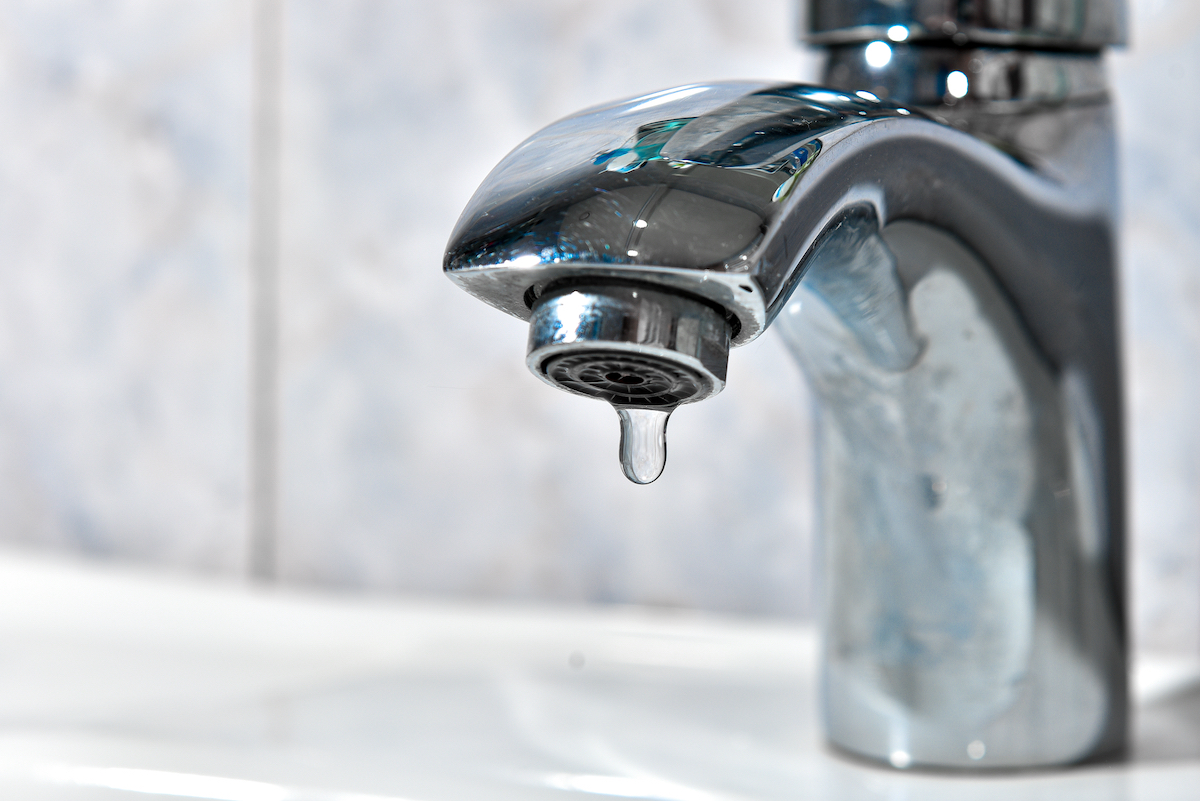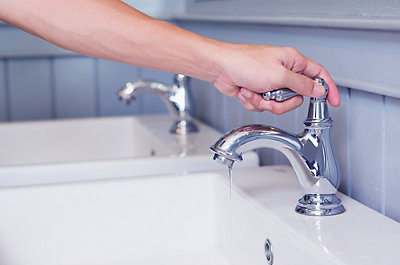The content in the next paragraphs relating to Should I Repair or Replace a Leaky Faucet? is extremely enlightening. Read it for yourself and figure out what you think about it.

Leaking taps could appear like a small aggravation, yet their impact surpasses just the nuisance of the sound. From wasting water to sustaining unneeded monetary costs and health dangers, ignoring a dripping tap can lead to various consequences. In this short article, we'll explore why it's vital to resolve this common household concern without delay and properly.
Waste of Water
Environmental Impact
Leaking taps contribute significantly to water wastefulness. According to the Environmental Protection Agency (EPA), a solitary tap leaking at one drip per second can lose more than 3,000 gallons of water each year. This not only stress water sources however likewise affects communities and wildlife based on them.
Step-by-Step Guide to Fixing a Dripping Tap
Devices Required
Before attempting to fix a trickling faucet, gather the needed devices, consisting of an adjustable wrench, screwdrivers, substitute parts (such as washers or cartridges), and plumber's tape.
Common Tap Issues and Their Solutions
Determine the sort of faucet and the details issue creating the drip. Usual issues include damaged washers, corroded valve seats, or defective O-rings. Describe producer directions or online tutorials for step-by-step advice on repair services.
Financial Prices
Enhanced Water Expenses
Past the environmental influence, dripping faucets can blow up water bills significantly. The gathered wastage gradually converts into higher energy expenditures, which might have been prevented with timely fixings.
Prospective Residential Property Damage
In addition, long term trickling can lead to harm to components and surfaces surrounding the faucet. Water build-up can create discoloration, rust, and even architectural problems if left neglected, causing extra repair work expenses.
Wellness Concerns
Mold and Mildew Growth
The continuous presence of wetness from a leaking tap produces an excellent setting for mold and mildew and mold development. These fungis not just jeopardize indoor air high quality but additionally posture wellness threats, specifically for people with respiratory system problems or allergic reactions.
Waterborne Conditions
Stationary water in trickling faucets can become a breeding ground for microorganisms and various other pathogens, increasing the danger of waterborne diseases. Impurities such as Legionella germs thrive in stationary water, possibly bring about significant diseases when ingested or breathed in.
Do it yourself vs. Expert Repair work
Benefits and drawbacks of DIY Repair Service
While some may try to fix a leaking tap themselves, DIY fixings include their very own collection of challenges. Without appropriate expertise and devices, do it yourself efforts can aggravate the issue or result in insufficient repair work, lengthening the trouble.
Advantages of Working With a Specialist Plumber
Working with an expert plumber makes sure that the underlying root cause of the leaking faucet is addressed efficiently. Plumbings have the experience and devices to diagnose and fix tap problems effectively, saving time and reducing the risk of more damage.
Ecological Responsibility
Private Contribution to Conservation
Taking responsibility for taking care of trickling faucets aligns with wider efforts toward water conservation and ecological sustainability. Every person's activities jointly make a considerable impact on preserving priceless sources.
Lasting Living Practices
By prioritizing prompt fixings and embracing water-saving habits, individuals contribute to lasting living techniques that profit both existing and future generations.
Preventive Measures
Routine Maintenance Tips
To prevent leaking taps, carry out regular upkeep such as cleansing aerators, evaluating for leaks, and changing worn-out parts immediately. Furthermore, consider installing water-saving gadgets or upgrading to a lot more effective components.
Significance of Prompt Fixes
Resolving dripping faucets as quickly as they're observed stops further water wastage and potential damages, ultimately conserving both water and money in the future.
Influence On Building Worth
Understanding of Well-Maintained Property
Keeping a property in good condition, consisting of attending to maintenance concerns like dripping faucets, improves its regarded value and worth among prospective buyers or lessees.
Impact on Resale Value
Residences with properly maintained plumbing fixtures, including taps, command higher resale worths in the property market. Addressing leaking faucets can contribute to a positive perception throughout residential or commercial property evaluations and arrangements.
Verdict
Attending to a leaking tap surpasses simple benefit; it's a vital step toward saving water, minimizing economic expenses, and securing wellness and residential property. Whether through DIY repair services or specialist aid, doing something about it to repair dripping faucets is a tiny yet impactful means to advertise accountable stewardship of resources and contribute to a healthier, much more sustainable future.
How to Fix a Leaky Faucet: Step-by-Step Repair Guide
A leaky faucet may seem like a simple annoyance, but if it's not fixed promptly, that leak could cost hundreds to potentially thousands. From water damage to mold, mildew, and high water bills, even a tiny leak can be catastrophic if left unattended. Damage like this can even affect the overall value of your home, so it's important to take the right approach for leaky faucet repair. You may need the help of a plumber in some cases, but we've got a few tips you can try on how to fix a leaky faucet before calling the pros.
Four Faucet Types
When you're learning how to fix a leaky faucet, the first step is knowing what kind of faucet you're working with! There are four common types.
Cartridge Faucets
Cartridge faucets come in one- or two-handled varieties. In one-handled cartridge faucets, hot and cold water combines in a single cartridge. In the two-handled versions, hot and cold water are controlled separately and mixed in the faucet.
Ball Faucets
Ball faucets have a single lever you push up and down to adjust the pressure and rotate to change the temperature. A slotted metal ball controls the amount of water allowed into the spout.
Compression Washer Faucets
They're the oldest type of faucet, but they're still used in many homes — especially older ones. Compression faucets have two separate handles that, when turned, raise or lower the washer that seals a water valve. This valve stops water from flowing through the faucet when it is turned off.
Disc Faucets
Disc faucets rarely need to be repaired due to their maintenance-free design. The water flow is controlled by two discs — the upper one raises and lowers against a fixed lower disc, creating a watertight seal. If your disc faucet starts leaking, you may need to replace the seals or clean residue buildup from the inlets.
Fixing a Leaky Faucet
Step 1: Turn Off the Water
Whether you're learning how to fix a leaky bathtub faucet or how to fix a leaky kitchen faucet, always turn off the water supply to your working area when you're fixing a leak. The last thing you want is a flood added to your list of things to fix.
Look for the shutoff valves below your sink or around the tub and turn them clockwise to stop the water flow. If your faucet doesn't have shutoff valves, you may need to turn off the water for the whole house. Check to make sure it's off by turning the faucet on. If nothing comes out, you're ready to start the repair.
Step 2: Take Apart the Faucet
How you disassemble your faucet depends on the type of fixture you have. You can use a flathead screwdriver to remove the caps on top of the handle or handles for cartridge and compression faucets. Inside, you should see handle screws. Unscrew these with a screwdriver to remove the handle.
Disc- and ball-style faucets will typically have an inlet screw near the handle, and removing that will reveal the interior of the faucet.
Detach the Valve Stem
For cartridge- and compression-style faucets, you'll see the inner valve stem or cartridge once you remove the faucet handles. If you have a compression faucet, unscrew the brass valve stem. If you have a cartridge faucet, pull out the cartridge. If your cartridge has been in place for a while, it may require some tools or extra force to remove it due to mineral deposits.
Examine and Replace Parts
Once you've removed the parts, check them out to confirm what needs to be replaced. You may see corroded rubber washers, O-rings, stems, or cartridges. On a ball-style faucet, check the seats and springs for damage.
If you need to repair a leaky disc faucet, check the inlet and seals on the lower disc.
Once you determine what parts must be replaced, visit your local hardware store. Bring the damaged parts with you to ensure you can purchase the correct components to replace them.
Clean Valves and Faucet Cavity
If you've removed a stem or cartridge, you may notice mineral buildup in the faucet's threads. Use white vinegar to clean the valve seat by soaking it for a few minutes, then scrub it away with a soft toothbrush and rinse with warm water. You can also clean the interior of the faucet in the same way.
Reassemble the Faucet
Once your faucet is cleaned and the required parts have been replaced, it's time to reassemble it. Put the pieces back together and slowly turn the water supply back on. Doing this slowly is crucial because too much initial water pressure can damage the new hardware you've just installed.
https://homewarranty.firstam.com/blog/how-to-fix-leaky-faucet

I hope you enjoyed reading our section about 4 Common Reasons for a Leaky Faucet. Thanks a ton for finding the time to read through our post. Do you know about somebody else who is in to the niche? Be sure promote it. Thanks a lot for being here. Revisit us soon.
 Rick Moranis Then & Now!
Rick Moranis Then & Now! Shaun Weiss Then & Now!
Shaun Weiss Then & Now! Spencer Elden Then & Now!
Spencer Elden Then & Now! Elisabeth Shue Then & Now!
Elisabeth Shue Then & Now! Heather Locklear Then & Now!
Heather Locklear Then & Now!